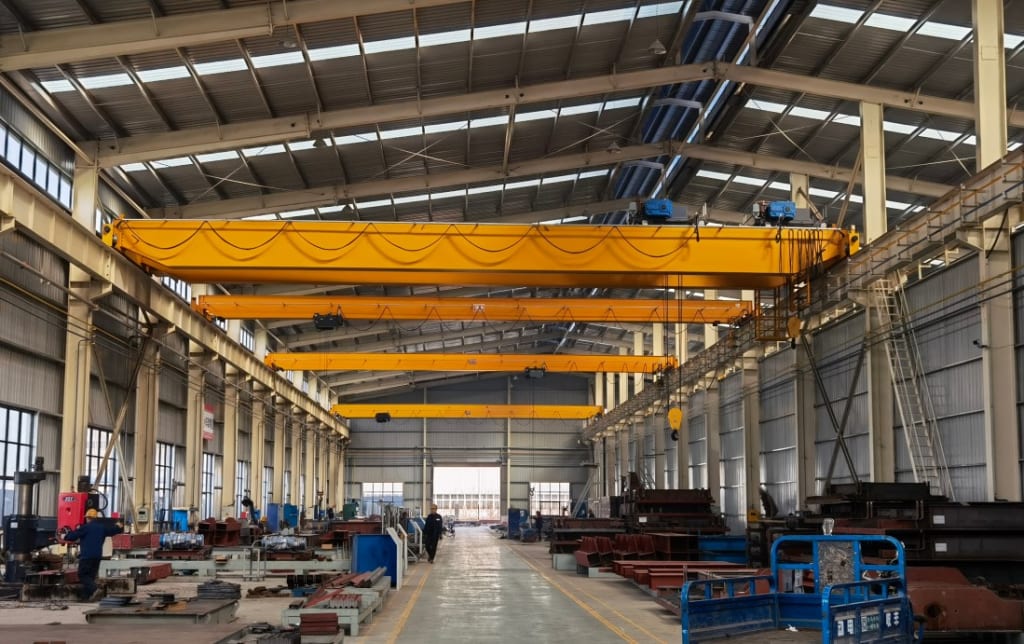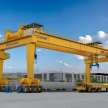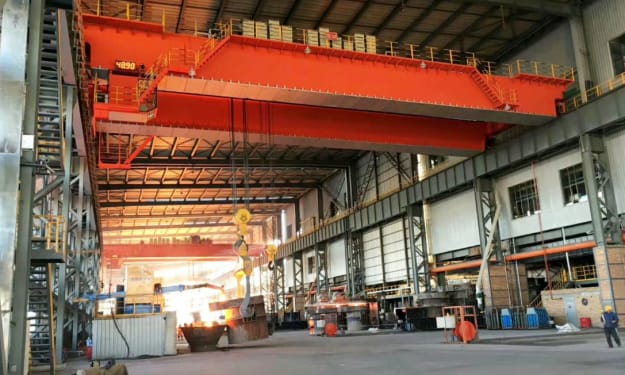How Does the Trolley Mechanism Work in a Double Girder Overhead Travelling Crane?
A critical component of an overhead crane

Double girder overhead travelling cranes are essential machinery in various industrial environments, particularly in warehouses, manufacturing facilities, and construction sites. These cranes are pivotal in handling heavy loads efficiently and safely. The trolley mechanism, a critical component of these cranes, plays a vital role in their functionality. This article delves into the intricate workings of the trolley mechanism in a double girder overhead travelling crane, exploring its components, operation, and significance.
Understanding the Double Girder Overhead Travelling Crane
A double girder overhead travelling crane comprises two parallel girders that form the bridge, supported by end trucks that move along rails on the runway beams. The crane's primary function is to lift and transport heavy loads across the workspace. The trolley, mounted on the bridge girders, carries the hoisting mechanism and moves horizontally along the length of the bridge. This horizontal movement, combined with the vertical lift provided by the hoist, allows for precise positioning and transportation of loads.
Components of the Trolley Mechanism
The trolley mechanism is a sophisticated system comprising several key components:
Trolley Frame: The structural framework that houses the trolley components and provides the necessary support and stability for the entire mechanism.
Wheels and Rails: The trolley moves along the girders via wheels, which run on specially designed rails. These wheels are typically made from hardened steel to withstand the heavy loads and ensure smooth motion.
Hoisting Mechanism: This includes the hoist motor, drum, wire rope or chain, and the hook. The hoist motor powers the drum, winding or unwinding the wire rope or chain to raise or lower the load.
Drive System: Comprising electric motors, gears, and brakes, the drive system controls the horizontal movement of the trolley along the bridge girders.
Control System: Operators control the trolley mechanism using a control pendant, radio remote control, or an automated system. The control system regulates the speed and direction of the trolley and hoisting operations.
Operation of the Trolley Mechanism
The operation of the trolley mechanism involves several coordinated steps to ensure precise and safe movement of loads. Here’s a detailed look at how the mechanism works:
Initiating Movement: The operator starts the trolley movement by engaging the control system. The control signals are sent to the drive motors, which then power the trolley wheels.
Horizontal Travel: The drive motors turn the wheels, propelling the trolley along the rails mounted on the bridge girders. The speed and direction of the trolley are controlled through the control pendant or remote control. Modern systems often feature variable frequency drives (VFDs) that allow for smooth acceleration and deceleration, enhancing safety and precision.
Hoisting the Load: Once the trolley is positioned above the load, the operator activates the hoist motor. The motor winds the wire rope or chain onto the drum, lifting the load. The hoisting mechanism includes safety features such as overload protection and limit switches to prevent over-travel and ensure safe operation.
Transporting the Load: With the load securely hoisted, the operator moves the trolley to the desired location. The synchronized movement of the trolley and bridge ensures that the load is transported efficiently across the workspace.
Lowering the Load: Upon reaching the destination, the operator reverses the hoist motor, unwinding the wire rope or chain and lowering the load. Precise control over the lowering speed ensures the load is placed accurately and safely.
Safety Features and Innovations
Safety is paramount in the operation of double girder overhead travelling cranes. The trolley mechanism is equipped with several safety features to protect both the operators and the equipment:
Limit Switches: These are installed to prevent the trolley from traveling beyond its designated path and to stop the hoist from over-lifting or over-lowering the load.
Overload Protection: This system monitors the load weight and prevents the hoist from lifting loads that exceed the crane's rated capacity, thereby preventing mechanical failures and accidents.
Brakes: High-quality braking systems are crucial for both the hoist and the trolley drive. These brakes ensure that the load can be held securely at any point during the operation and that the trolley can be stopped accurately.
Anti-Collision Systems: Advanced cranes are equipped with anti-collision systems that use sensors to detect obstacles in the trolley’s path, automatically stopping or slowing down the trolley to avoid collisions.
Technological Advancements
The integration of modern technologies has significantly enhanced the efficiency and safety of the trolley mechanisms in double girder overhead travelling cranes:
Automation: Automated cranes equipped with programmable logic controllers (PLCs) and sensors can perform repetitive tasks with minimal human intervention, increasing productivity and reducing the risk of human error.
Remote Monitoring: IoT-enabled cranes allow for remote monitoring and diagnostics, providing real-time data on the crane's performance and enabling predictive maintenance.
Enhanced Control Systems: Advanced control systems with touch-screen interfaces and ergonomic designs improve operator comfort and control precision.
Conclusion
The trolley mechanism in a double girder overhead travelling crane is a complex and essential component that ensures the crane's functionality and efficiency. Understanding its components and operation is crucial for optimal use and maintenance. With ongoing technological advancements, these mechanisms continue to evolve, offering enhanced safety, efficiency, and ease of operation. As industries increasingly rely on these cranes for heavy lifting and material handling, the significance of a well-functioning trolley mechanism cannot be overstated.
About the Creator
Aicrane01
Welcome to the Aicrane Blog, your practical guide to lifting solutions. Discover articles covering overhead cranes, gantry cranes, winches, steel structures, boat lifts, and more.
Website: https://steelmillcranes.com/
Enjoyed the story? Support the Creator.
Subscribe for free to receive all their stories in your feed. You could also pledge your support or give them a one-off tip, letting them know you appreciate their work.






Comments
There are no comments for this story
Be the first to respond and start the conversation.